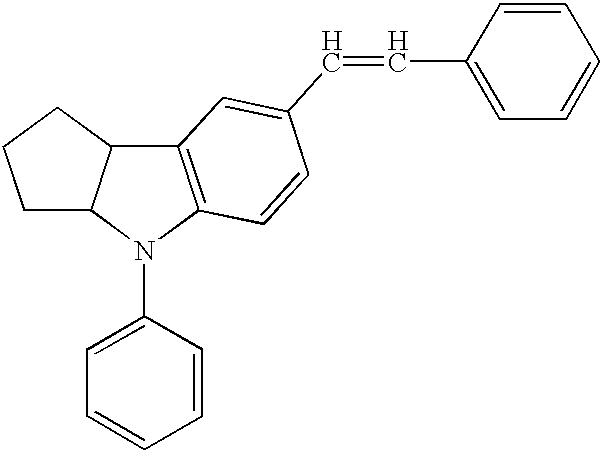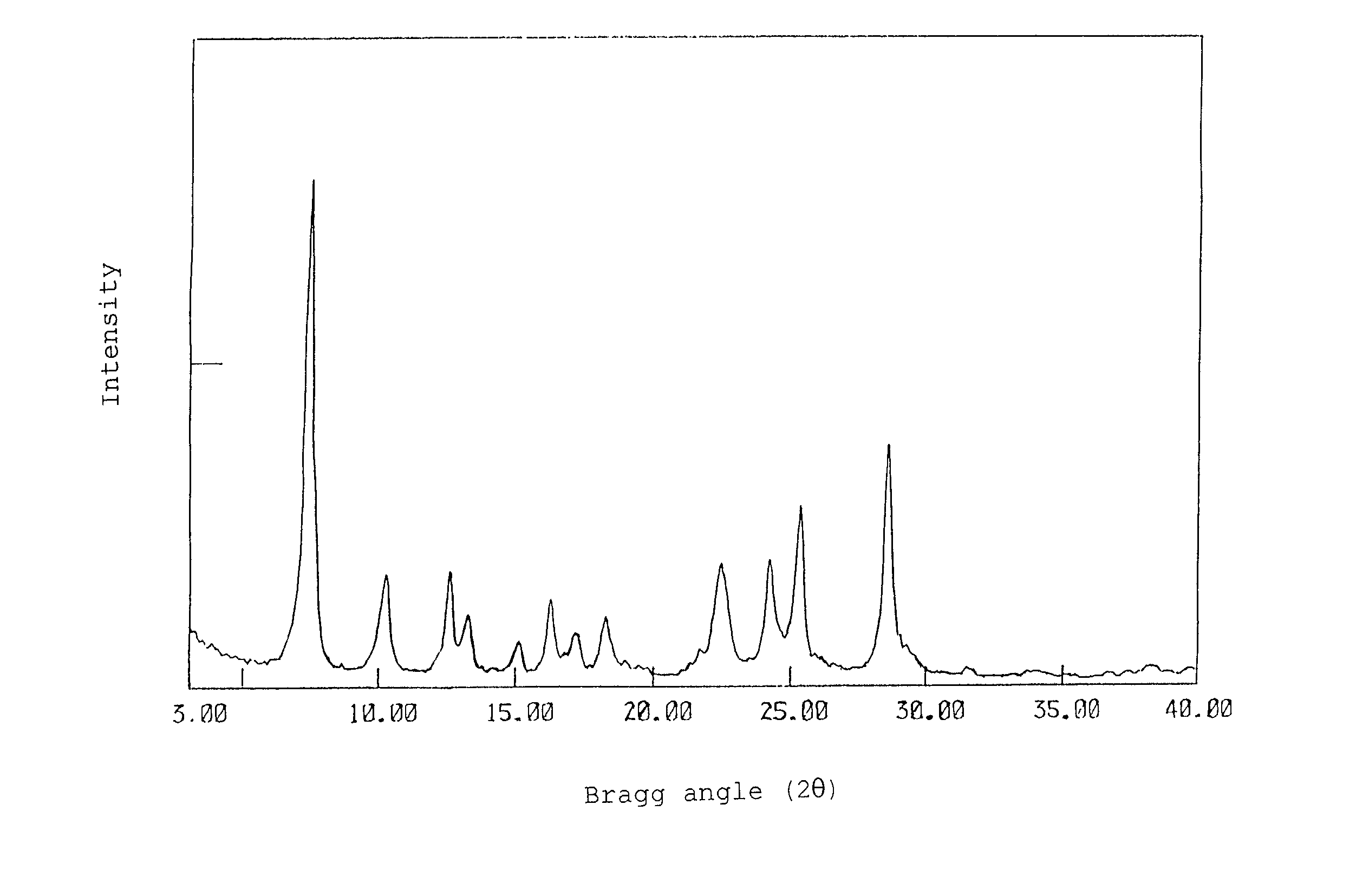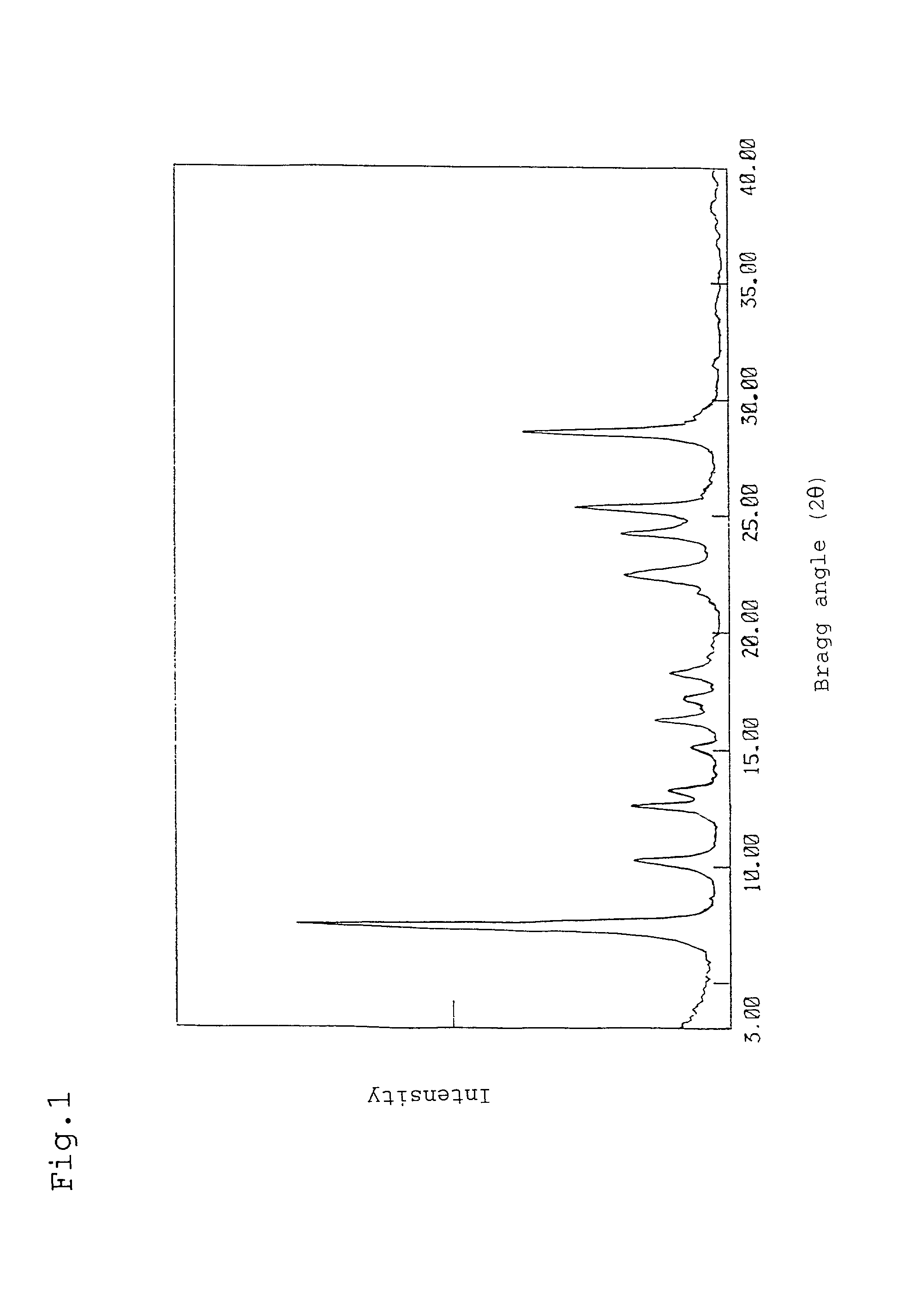Phthalocyanine composition, process for production thereof, and electrophotographic photoreceptor
a technology of electrophotographic and phthalocyanine, which is applied in the direction of porphines/azaporphines, instruments, organic dyes, etc., can solve the problems of easy crystallization, severe production conditions with selenium, and defects of selenium, and achieve high sensitivity, stable performance, and high chargeability
- Summary
- Abstract
- Description
- Claims
- Application Information
AI Technical Summary
Benefits of technology
Problems solved by technology
Method used
Image
Examples
example 1
[0060] Example 1
[0061] (1) 20.0 Gram of phthalodinitrile was dissolved in 200 ml of 1-chloronaphthalene, and under a nitrogen atmosphere, 9.0 g of titanium tetrachloride was dropwise added. After the addition, the mixture was stirred under heat at 240.degree. C. After 3 hours, the reaction was terminated, a precipitated crystal was recovered by filtration, and the crystal was fully washed with 1-chloronaphthalene and with methanol, to give dichlorotitanylphthalocyanine. The dichlorotitanium phthalocyanine was refluxed together with 150 ml of concentrated aqueous ammonia under heat with stirring. After 1 hour, the reaction was terminated, and a crystal was recovered by filtration, to give 17.4 g of TiOPc. The recovered crystal was measured for a CuK.alpha. X ray diffraction spectrum with an X-ray diffractometer (RAD-C system manufactured by Rigaku Denki K.K.) to determine its crystal form. FIG. 1 shows the measurement result.
[0062] Measurement Conditions
example 2
[0066] Example 2
[0067] Crystal transformation was carried out in the same manner as in Example 1(4) except that 2.0 g of naphthalene was replaced with a mixture of 1.0 g of naphthalene with 1.0 g of ethylcyclohexane. As a result, 0.9 g of a crystal was obtained. The obtained crystal had the same X-ray diffraction spectrum as that shown in FIG. 4.
example 3
[0068] Example 3
[0069] Crystal transformation was carried out in the same manner as in Example 1(4) except that 2.0 g of naphthalene was replaced with 2.0 g of 1-methylnaphthalene. As a result, 0.9 g of a crystal was obtained. The obtained crystal had the same X-ray diffraction spectrum as that shown in FIG. 4.
PUM
| Property | Measurement | Unit |
|---|---|---|
| 2θ | aaaaa | aaaaa |
| Bragg angle | aaaaa | aaaaa |
| Bragg angle | aaaaa | aaaaa |
Abstract
Description
Claims
Application Information
 Login to View More
Login to View More - R&D
- Intellectual Property
- Life Sciences
- Materials
- Tech Scout
- Unparalleled Data Quality
- Higher Quality Content
- 60% Fewer Hallucinations
Browse by: Latest US Patents, China's latest patents, Technical Efficacy Thesaurus, Application Domain, Technology Topic, Popular Technical Reports.
© 2025 PatSnap. All rights reserved.Legal|Privacy policy|Modern Slavery Act Transparency Statement|Sitemap|About US| Contact US: help@patsnap.com



